Choosing the Right 4-Bay Synology NAS to Buy
With sales time almost upon us, many buyers are looking to buy a new Synology NAS. Whether you are buying your first NAS server, or you are upgrading your pre-existing Network Attached Storage device, there are a great many advantages to investing in a solid 4-Bay NAS solution. Notwithstanding the obvious advantages that being able to populate it with a larger number of drives than a simple 2-Bay NAS, there are a host of other reasons including but not limited to:
- Better Hardware internally compared with two bay NAS as there is more room to fill and often much better memory options
- Increased Air Flow to keep things cool in the larger chassis space
- More space for extra options like SSD caching
- Better support in terms of max-users in the Synology DSM software applications
- Better external Connections and quantities to access your DATA directly
- Better expansion options and often able to connect a NAS Expansion unit such as the DX517
- Much higher Read and Writes/ Uploads and Downloads thanks to greater LAN port access numbers
- Often lower in price comparatively as you can achieve higher storage volume capacities in a RAID 5 across 3 or more drives, than the 50% capacity loss of RAID 1.
However, knowing you want to buy a Synology NAS 4-Bay is just the beginning. The official specifications for each NAS are published by Synology , but that are page after page of complex data and you can soon get confused about how each 4 HDD NAS is different, and what exactly means good and what means bad. Whether you are looking for a bargain this Black Friday, Cyber Monday, Boxing day or even a January sale purchase, Synology is often regarded as one of the best brands in NAS and therefore many will see their units first and then get a little lost amongst the range. Today we will compare all of the current 4-Bay Synology NAS servers you can buy and find out the which is the best NAS for you?
Which Synology NAS is the best for Price?
The cost of a NAS server can often be the biggest decider on choosing the right Synology NAS for your needs. Prices start out as low as £250+ ex.VAT and go up as high as £450+ ex.VAT – and that is before you have even installed a single Hard Drive or SSD. So for many, the price tag is very important. Perhaps you go for the cheapest NAS and hope for the best, or you buy long-term and go for the most expensive – either way, what you want is VALUE for money! In terms of price vs hardware, the Synology DS418play is the outright winner as it provides solid hardware inside to support common features like Apple Time Machine, Plex, DLNA, 4K Playback, Transcoding, Office applications and more. Whereas if your budget is small or a little tight, then you can always consider the DS418J as even though it is rather low in price, the hardware inside is still pretty good for comprehensive RAID storage, DLNA media servers, download servers, mail services, files storage and Surveillance.
What is the best Synology NAS for Software?
All Synology NAS server devices arrive with the award-winning DSM (Diskstation Manager) currently in version 6.1 (with DSM 6.2 in beta). But the extent to which they perform is where you will need to be selective about the Synology NAS 4-Bay that you choose. As mentioned, they all have a basic level of support for the traditional areas of network storage like Media, Backups, File Distribution, Surveillance, Encryption and Internet Access – but with each device tier (first J, then Standard, then Play, then Plus) then maximum number of users, tasks, resolution, instructions and operational density increases. So it goes, that the more you want to do with the NAS and the more users you want to access the NAS, the more you will need to pay. Once again, the DS418play is the sweet spot for those who want all the options on a lower budget BUT just spending a little more and getting the Synology DS918+ will ensure you get a NAS that can pretty much do ANYTHING that the Synology DSM software can offer.
Choosing the Right Synology 4-Bay NAS Based on Performance
Second, only to NAS price, the performance of a 4-Bay NAS will be one of the biggest things affecting your NAS purchase. The Hardware under the bonnet of each NAS will greatly affect the overall performance of the NAS server for the tasks you have in mind. Of these units, it is clear very early on that it is the Plus series DS918+ NAS has the greatest CPU and RAM options available. This coupled with the ability to expand that memory in the NAS from 4GB upto 8GB is a welcome option to those that want to upgrade a NAS years into its lifespan. There is a reason it is considered the top dog of the Synology 4-Bay NAS pack for 2017 and 2018.
That said, you should not overlook the cheap NAS at the end of the line – DS418j. This does mean that it is unsuitable for Plex Media Servers in terms of transcoding HD and 4K media, as well as VMware and Virtualisation in general, but still never skip them if you need a solid, robust NAS that can perform traditional Network Attached Storage tasks and DLNA NAS services in your home or office. Finally, there is the Synology DS418play that manages to provide the best of both worlds in a well-performing CPU from Intel and 2gB of DDR3 Memory. The DS418play should be your middle ground NAS when deciding between home and business needs.
Which Synology 4-Bay NAS is the best for Connectivity in 2017 and 2018?
As mentioned earlier, buying your first 4-Bay NAS opens up a larger degree of connections and how you access your NAS data. Once again, it is unsurprising that the most expensive NAS is the Best NAS in this field.
Featuring dual LAN ports to provide Link Aggregation (that can double your transmission speeds if you own a smart switch from Netgear or a LAG enabled router), comprehensive USB 3.0 ports to connect several external devices at 5GB/s speeds and eSATA at 6GB/s. However, if you choose to buy a Synology NAS such as the DS418J or DS418.
Then you will see reductions on all these fields and if direct NAS access is a deal-breaker for you, then you would be wise to spend the extra and for a Synology PLUS series NAS. Once again, consider the DS418play the middle of the pack on this and one to buy if you are having difficulty deciding. Lastly, in the Synology 4-Bay or NAS range, the key thing to look for is an eSATA port as that is how the Synology 5-Bay expansion DX517 NAS connects and this is possible with only 1 of the Synology Desktop 4 Bay NAS server devices, the Synology DS918+ NAS. Hence the 9 in the title.
Which Synology 4-Bay Diskstation NAS consumes the most power and makes the most noise?
Network Attached Storage devices can be left on for days, weeks, months and (though not advised without the occasional restart) years! This can mean that for many users (especially Home users, but not limited to just them) that NAS power consumption can be an important factor. Four Bay NAS on paper consume more power than their 1 and 2 Bay brother and sisters, however, once you take into account the amount of power consumed by a number of Drives and via multiple LAN access, the power used is quite relative. Obviously, the higher the CPU frequency, the number of cores and the amount of RAM plays a big factor, as does the drives you use. All the stats shown are for filling the boxes below with 4x 1TB WD Red WD10EFRX drives and the results are quite telling. However, it should be clear that he more budget-friendly NAS is lower in power consumption due to their hardware being less demanding. If however, you want full capability at the lowest power consumption possible in a Synology 4 Bay NAS, I have no hesitation in recommending the Synology DS418play NAS, as it gives a good balance of Power vs Consumption.
Which Synology NAS is the best for a Plex Media Server?
Almost all four of the new Synology 4-Bay NAS server devices can act as a Plex Media Server, with performance being unavailable on the DS418 and DS418J. However, the big, BIG difference is the ability to transcode. When streaming media over the internet from your NAS device, to your iPhone or iPad via Plex, sometimes the files you play are going to be too big to play, an incompatible format or with a resolution incompatible with the viewing device. A NAS such as the DS418PLAY or DS918+ has the transcoding engine on board so it can make these changes on the fly for you. However, the DS418J does not have plex compatible hardware and therefore not suitable for an ideal Plex Media Server NAS.
Which Synology NAS is best for 4K Media, 1080p Streaming and Transcoding?
The good news is that the DS418J, DS418, DS418play and DS918+ NAS all can stream 1080p and audio media via DLNA to your Smart TV, iPhone, iPod, iPad, PS4, PS3, Xbox, Sonos, Bose and more. However, after this, the performance of each NAS changes. Only the DS418, DS418play and DS918+ can playback and transcode 4K media (with the DS918+ being able to playback H.264 and H.265). Which brings us to transcoding dense 4K, which is only possible via the DS418play and DS918+ NAS servers. And finally, the outright winner is the Synology DS918+ NAS (shocking, I know) because it can do two 4K streams, where the DS418play can only do the one. So, via a process of ‘America’s Got Talent’ esc elimination, we can see that the best 4-Bay NAS for 4K, 1080p, streaming and transcoding is the Synology DS918+.
What are the Specifications of the Synology DS918+, DS418Play, DS418 and DS418j NAS?
|
Synology 4-Bay NAS Comparison 2017 / 2018 |
||||
| DS418 | DS418j | DS418play | DS918+ | |
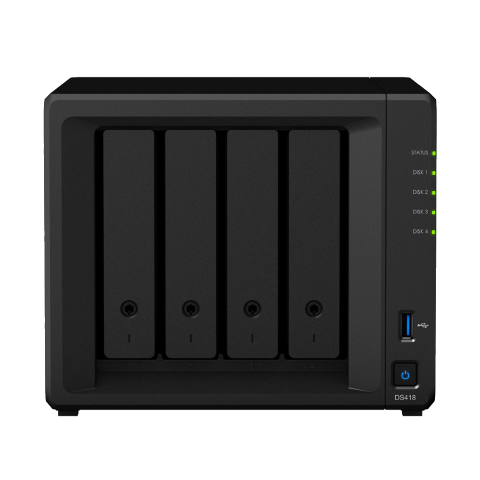 |
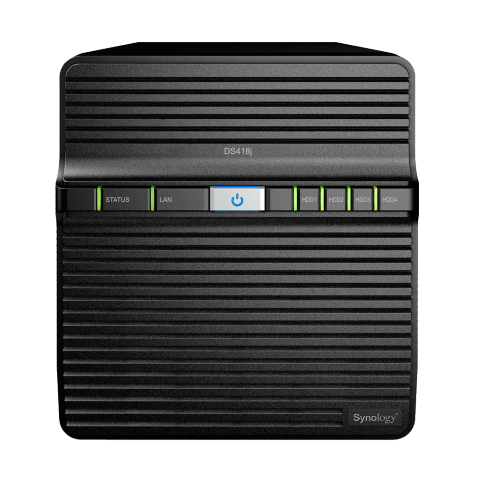 |
 |
 |
|
| CPU Model | Realtek RTD1296 | Realtek RTD1293 | Intel Celeron J3355 | Intel Celeron J3455 |
| CPU Architecture | 64-bit | 64-bit | 64-bit | 64-bit |
| CPU Frequency | Quad Core 1.4 GHz | Dual Core 1.4 GHz | Dual Core 2.0 burst up to 2.5 GHz | Quad Core 1.5 burst up to 2.3 GHz |
| Hardware Encryption Engine 256bit | YES | YES | ||
| Hardware Encryption Engine (AES-NI) | YES | YES | ||
| Hardware Transcoding Engine | 10-bit H.265 (HEVC), MPEG-4 Part 2, MPEG-2, VC-1; maximum resolution: 4K (4096 x 2160); maximum frame rate per second (FPS): 30 | NO TRANSCODING | H.264 (AVC), H.265 (HEVC), MPEG-2 and VC-1; maximum resolution: 4K (4096 x 2160); maximum frame rate per second (FPS): 30 | H.264 (AVC), H.265 (HEVC), MPEG-2 and VC-1; maximum resolution: 4K (4096 x 2160); maximum frame rate per second (FPS): 30 |
| Memory | ||||
| System Memory | 2 GB DDR4 | 1 GB DDR4 | 2 GB DDR3L | 4 GB DDR3L |
| Memory Module Pre-installed | 2GB (1 x 2GB) | 4GB (1 x 4GB) | ||
| Total Memory Slots | 2 | 2 | ||
| Memory Expandable up to | 6 GB (2 GB + 4 GB) | 8 GB (4 GB x 2) | ||
| Storage | ||||
| Drive Bays | 4 | 4 | 4 | 4 |
| Maximum Drive Bays with Expansion Unit | 9 | |||
| M.2 Drive Slots | 2 | |||
| Maximum Internal Raw Capacity | 48 TB (12 TB drive x 4) (Capacity may vary by RAID types) | 48 TB (12 TB drive x 4) (Capacity may vary by RAID types) | 48 TB (12 TB drive x 4) (Capacity may vary by RAID types) | 48 TB (12 TB drive x 4) (Capacity may vary by RAID types) |
| Maximum Raw Capacity with Expansion Units | 108 TB (12 TB drive x 9) (Capacity may vary by RAID types) | |||
| Hot Swappable Drive | YES | YES | YES | |
| External Ports | ||||
| RJ-45 1GbE LAN Port | 2 (with Link Aggregation / Failover support) | 1 | 2 (with Link Aggregation / Failover support) | 2 (with Link Aggregation / Failover support) |
| USB 3.0 Port | 2 | 2 | 2 | 2 |
| eSATA Port | 1 | |||
| File System | ||||
| Internal Drives | EXT4 | EXT4 | Btrfs
EXT4 |
Btrfs
EXT4 |
| Appearance | ||||
| Size (Height x Width x Depth) | 166 mm x 199 mm x 223 mm | 184 mm x 168 mm x 230 mm | 166 mm x 199 mm x 223 mm | 166 mm x 199 mm x 223 mm |
| Weight | 2.28 kg | 2.21 kg | 2.23 kg | 2.28 kg |
| Others | ||||
| System Fan | 92 mm x 92 mm x 2 pcs | 80 mm x 80 mm x 2 pcs | 92 mm x 92 mm x 2 pcs | 92 mm x 92 mm x 2 pcs |
| Brightness adjustable front LED indicators | YES | YES | YES | YES |
| Power Recovery | YES | YES | YES | YES |
| Noise Level* | 20.9 dB(A) | 20.6 dB(A) | 20.5 dB(A) | 19.8 dB(A) |
| Scheduled Power On/Off | YES | YES | YES | YES |
| Wake on LAN/WAN | YES | YES | YES | YES |
| Power Supply Unit / Adapter | 90W | 90W | 90W | 100W |
| Power Consumption* | 26.49 W (Access) 8.78 W (HDD Hibernation) |
21.22 W (Access) 8.97 W (HDD Hibernation) |
29.01 W (Access) 5.57 W (HDD Hibernation) |
28.8 W (Access) 12.6 W (HDD Hibernation) |
| Warranty | 2 Years | 2 Years | 2 Years | 3 Years |
| Storage Management | ||||
| Maximum Internal Volume Number | 256 | 256 | 256 | 512 |
| Maximum iSCSI Target Number | 10 | 10 | 32 | 32 |
| Maximum iSCSI LUN | 10 | 10 | 256 | 256 |
| iSCSI LUN Clone/Snapshot, Windows ODX | YES | YES | ||
| Supported RAID Type | Synology
Hybrid RAID Basic JBOD RAID 0 RAID 1 RAID 5 RAID 6 RAID 10 |
Synology
Hybrid RAID Basic JBOD RAID 0 RAID 1 RAID 5 RAID 6 RAID 10 |
Synology
Hybrid RAID Basic JBOD RAID 0 RAID 1 RAID 5 RAID 6 RAID 10 |
Synology
Hybrid RAID Basic JBOD RAID 0 RAID 1 RAID 5 RAID 6 RAID 10 |
| SSD Read/Write Cache(White Paper) | YES | |||
| SSD TRIM | YES | YES | YES | YES |
| File Sharing Capacity | ||||
| Maximum Local User Accounts | 2048 | 1024 | 2048 | 2048 |
| Maximum Shared Folder | 256 | 256 | 256 | 512 |
| Maximum Shared Folder Sync Tasks | 4 | 2 | 4 | 8 |
| Maximum Concurrent CIFS/AFP/FTP Connections | 200 | 100 | 200 | 1000 |
| Windows Access Control List (ACL) Integration | YES | YES | YES | YES |
| NFS Kerberos Authentication | YES | YES | YES | YES |
| High Availability Manager | YES | |||
| Log Center | ||||
| Syslog Events per Second | 100 | 100 | 400 | 800 |
| Virtualization | ||||
| VMware vSphere 6 with VAAI | YES | |||
| Windows Server 2012 | YES | |||
| Windows Server 2012 R2 | YES | |||
| Citrix Ready | YES | |||
| OpenStack | YES | |||
| Antivirus by McAfee (Trial) | YES | YES | ||
| Central Management System | YES | |||
| Chat | YES | YES | YES | YES |
| Maximum Users | 500 | 10 | 1000 | 1500 |
| Cloud Station Server | YES | YES | YES | YES |
| Maximum Number of Concurrently Connected Devices | 200 | 100 | 200 | 1000 |
| Maximum Number of Concurrently Connected Devices (with RAM expansion) | 300 | 2000 | ||
| Maximum Number of Synced Files (btrfs) | 1,000,000 / single file reaction time 834 ms | 1,000,000 / single file reaction time 744 ms | ||
| Maximum Number of Synced Files (ext4) | 100,000 / single file reaction time 766 ms | 100,000 / single file reaction time 789 ms | 1,000,000 / single file reaction time 484 ms | 1,000,000 / single file reaction time 630 ms |
| Document Viewer | YES | |||
| Download Station | YES | YES | YES | YES |
| Maximum Concurrent Download Tasks | 30 | 30 | 80 | 80 |
| MailPlus / MailPlus Server | YES | YES | ||
| Free Email Accounts | 5 (Licenses required for additional accounts) | 5 (Licenses required for additional accounts) | ||
| Recommended MailPlus Client Number | Up to 45 (Btrfs) / 45 (ext4) | Up to 90 (Btrfs) / 90 (ext4) | ||
| Maximum Server Performance | 181,000 (Btrfs) / 194,000 (ext4) emails per day, approx. 5.5 GB (Btrfs) / 5.9 GB (ext4) | 840,000 (Btrfs) / 1,014,000 (ext4) emails per day, approx. 25.6 GB (Btrfs) / 30.9 GB (ext4) | ||
| Media Server | YES | YES | YES | YES |
| DLNA Compliance | YES | YES | YES | YES |
| Office | YES | YES | YES | YES |
| Maximum Users | 100 | 10 | 200 | 200 |
| Maximum Simultaneous Editing Users | 30 | 10 | 60 | 80 |
| Snapshot Replication | YES | YES | ||
| Maximum Snapshots per Shared Folder | 1024 | 1024 | ||
| Maximum Snapshots of all Shared Folder | 65536 | 65536 | ||
| Surveillance Station | ||||
| Maximum IP cam (Licenses required) | 30 (including 2 Free License) (See All Supported IP Cameras) | 16 (including 2 Free License) (See All Supported IP Cameras) | 25 (including 2 Free License) (See All Supported IP Cameras) | 40 (including 2 Free License) (See All Supported IP Cameras) |
| Total FPS (H.264)* | 900 FPS @ 720p (1280×720) 300 FPS @ 1080p (1920×1080) 240 FPS @ 3M (2048×1536) 150 FPS @ 5M (2591×1944) 110 FPS @ 4K (3840×2160) |
480 FPS @ 720p (1280×720) 240 FPS @ 1080p (1920×1080) 150 FPS @ 3M (2048×1536) 100 FPS @ 5M (2591×1944) |
750 FPS @ 720p (1280×720) 375 FPS @ 1080p (1920×1080) 250 FPS @ 3M (2048×1536) 200 FPS @ 5M (2591×1944) 120 FPS @ 4K (3840×2160) |
1200 FPS @ 720p (1280×720) 840 FPS @ 1080p (1920×1080) 550 FPS @ 3M (2048×1536) 300 FPS @ 5M (2591×1944) 180 FPS @ 4K (3840×2160) |
| Total FPS (H.265)* | 900 FPS @ 720p (1280×720) 450 FPS @ 1080p (1920×1080) 360 FPS @ 3M (2048×1536) 250 FPS @ 5M (2591×1944) 180 FPS @ 4K (3840×2160) |
750 FPS @ 720p (1280×720) 750 FPS @ 1080p (1920×1080) 450 FPS @ 3M (2048×1536) 250 FPS @ 5M (2591×1944) 200 FPS @ 4K (3840×2160) |
1200 FPS @ 720p (1280×720) 1200 FPS @ 1080p (1920×1080) 900 FPS @ 3M (2048×1536) 550 FPS @ 5M (2591×1944) 300 FPS @ 4K (3840×2160) |
|
| Total FPS (MJPEG)* | 300 FPS @ 720p (1280×720) 200 FPS @ 1080p (1920×1080) 130 FPS @ 3M (2048×1536) 80 FPS @ 5M (2591×1944) |
224 FPS @ 720p (1280×720) 150 FPS @ 1080p (1920×1080) 100 FPS @ 3M (2048×1536) 60 FPS @ 5M (2591×1944) |
450 FPS @ 720p (1280×720) 250 FPS @ 1080p (1920×1080) 160 FPS @ 3M (2048×1536) 130 FPS @ 5M (2591×1944) |
720 FPS @ 720p (1280×720) 500 FPS @ 1080p (1920×1080) 330 FPS @ 3M (2048×1536) 200 FPS @ 5M (2591×1944) |
| Video Station | YES | YES | YES | YES |
| Video Transcoding | 4K Group 3 (See more) | Group 2 (See more) | 4K Group 1 (See more) | 4K Group 1 (See more) |
| Maximum Transcoding Channel Number |
|
|
|
|
| VPN Server | YES | YES | YES | YES |
| Maximum Connections | 15 | 5 | 20 | 20 |
Need Help?
Where possible (and where appropriate) please provide as much information about your requirements, as then I can arrange the best answer and solution to your needs. Do not worry about your e-mail address being required, it will NOT be used in a mailing list and will NOT be used in any way other than to respond to your enquiry.
🔒 Join Inner Circle
Get an alert every time something gets added to this specific article!
This description contains links to Amazon. These links will take you to some of the products mentioned in today's content. As an Amazon Associate, I earn from qualifying purchases. Visit the NASCompares Deal Finder to find the best place to buy this device in your region, based on Service, Support and Reputation - Just Search for your NAS Drive in the Box Below
Need Advice on Data Storage from an Expert?
Finally, for free advice about your setup, just leave a message in the comments below here at NASCompares.com and we will get back to you. Need Help?
Where possible (and where appropriate) please provide as much information about your requirements, as then I can arrange the best answer and solution to your needs. Do not worry about your e-mail address being required, it will NOT be used in a mailing list and will NOT be used in any way other than to respond to your enquiry.
Need Help?
Where possible (and where appropriate) please provide as much information about your requirements, as then I can arrange the best answer and solution to your needs. Do not worry about your e-mail address being required, it will NOT be used in a mailing list and will NOT be used in any way other than to respond to your enquiry.

|
 |
The Best Bits (and Worst Bits) of NAS of 2025!
Minisforum MS-02 Ultra Review
Minisforum N5 NAS, 6 Months Later - Better, Worse, the Same?
Beelink ME Pro NAS Revealed
Best SOLID STORAGE NAS of 2025
Should You Worry About the NanoKVM Hidden Microphone?
Access content via Patreon or KO-FI
Discover more from NAS Compares
Subscribe to get the latest posts sent to your email.


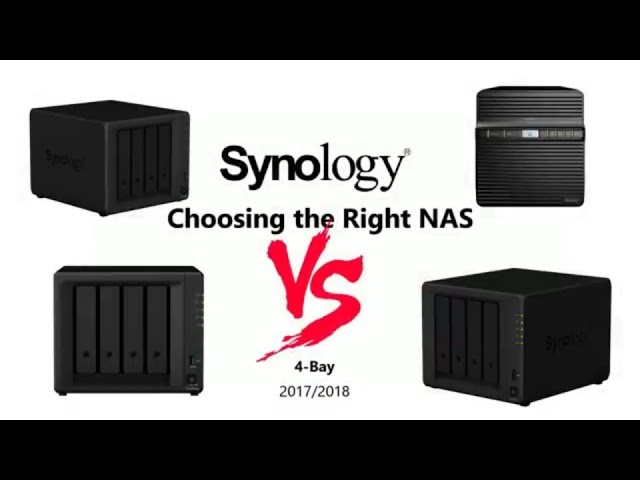
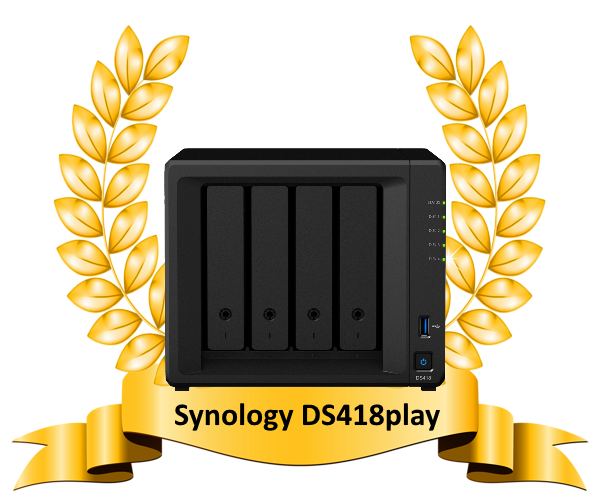
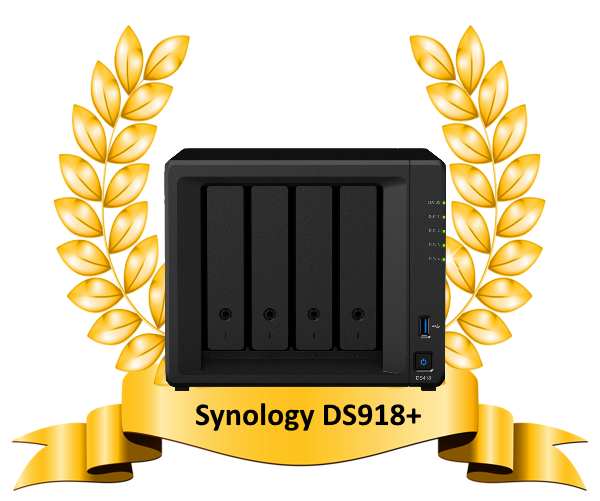

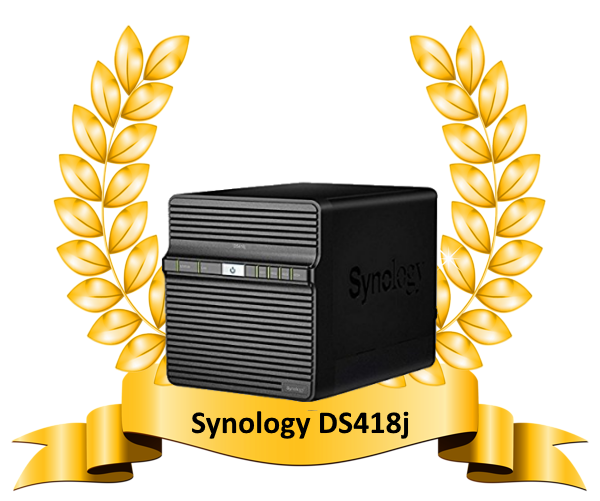



Horrible company with dreadful support. Avoid.
REPLY ON YOUTUBE